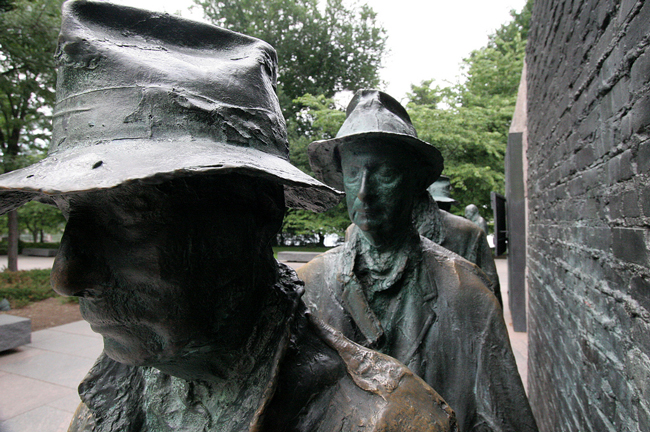
Some 6,576 Florida workers–and 119,000 across the country–had a different kind of black Fridays in October: they saw their last paychecks and were part of mass lay-offs, defined by the U.S. labor Department as a lay-off of 50 or more employees from a single company at one stroke. Florida was second in the nation with 91 such mass lay-offs, behind California, where 322 mass layoffs resulted in 24,000 job losses.
The numbers are nevertheless an improvement over those of a year earlier, when, in October 2010, Florida had 105 mass layoffs resulting in 9,300 job losses, and a 148,000 such job losses across the country.
“Over the year, the number of average weekly mass layoff events decreased by 53, and associated average weekly initial claims decreased by 5,499,” the Labor Department reported. “Sixteen of the 19 major industry sectors in the private economy reported over-the-year decreases in average weekly initial claims, with the largest decreases occurring in construction and manufacturing.”
Florida’s unemployment rate in October fell to 10.3 percent, best in 23 months, but the declining numbers have less to do with strong job creation than workers dropping out of the official unemployment rolls, or finding part-time work. According to the Labor Department, Florida’s effective unemployment and under-employment rate is 18.2 percent, or close to one in five worker. That measure includes people officially out of work (10.3 percent), plus discouraged workers, who’ve quit looking, plus those employed part-time because they can’t find full-time work, or had their hours cut back.
While tourism and health care continue to drive what job recovery there’s been in Florida, the Orlando Sentinel reported last week that Central Florida added just 8,600 jobs in the last 12 months, largely in bars, restaurants, hotels and theme parks. “It is a sector filled with young, unskilled labor willing to work for relatively little money, often without benefits. These are the folks who cook your burgers, vacuum your hotel room and buckle you into theme-park rides,” the Sentinel reported. “Construction employment, meanwhile, has fallen to some of its lowest levels since 1996. It accounted for about 7.8 percent of all jobs in 2007 and now accounts for just 4.4 percent.”
The slight if steady improvement adds to a series of indicators that point to an economy fitfully struggling to right itself as the nation heads into its most important retail months of the year. On Tuesday, the Bureau of Economic Analysis revised its estimate for GDP growth in the third quarter from an earlier reported 2.5 percent to 2 percent. On the other hand, the nation’s trade deficit declined for three straight months through September, pointing to stronger exports–which create jobs–with industrial production rising, mortgage foreclosures continuing to decline (slowly) and residential building improvements (not construction) hitting record highs: people are spending more on the homes they’re living in, even if they’re not yet ready to buy new homes.
Overall, initial jobless claims are falling. But Gallup’s economic confidence index remains near two-year lows, and what improvements the economy is seeing now m,ay be temporary, especially in light of the failure of Congress to reach an agreement on deficit reduction, and Europe’s continuing debt troubles, which could have severe repercussions worldwide. Two measures hugely important to economic activity expire at the end of December: extended unemployment benefits for American workers, and the 2 percent cut in the payroll tax, or Social Security tax, which every worker pays. Combined, the two measures account for roughly 2 percent of the nation’s economic activity–or would result in a drop of 2 percent should Congress fail to renew them.
“Europe’s crisis looms larger still. A deep euro-zone recession, which seems increasingly likely, will hurt American firms; roughly a fifth of the country’s exports go to Europe. The impact on the financial system could be the more damaging,” The Economist writes this week. “The chill wind from Europe can already be felt in some corners of the economy. Stockmarkets have dropped about 7% in the past week and are now only 6% above October’s lows. Orders for durable goods are also dropping, as firms predict difficult times ahead. The unexpectedly sunny last few months of 2011 may provide Americans with a glimpse of what its economy could be, in a stabler, better governed world. Sadly, it may be a while before the data are again this positive.”




























Jack Cowardin says
How many people (who care enough) reading about the above statistics will become unemployed
in the near future, right here in PC? Bof A will layoff 30,000 before the holidays. Bet the two branches here
take casualties. PC Data may not survive another year. Dept of Ed will lose 10-15%, I suspect. And I continually see new people replacing veteran personnel in retail, which always cuts after the holidays.
But hey, we are told no new recession and that the European Medusa is far, far away. Did anyone notice
China’s PM numbers were down last week signaling a slow down? Now all the Wal Mart shoppers are slacking.
Just 12 more months and a new champion of the working man/woman will save the day. With the line up of task masters vying for the job there’s no way things could get worse, according to Megan.
But in the mean time… We all have to fiend for ourselves. Sink or swim. Run, don’t walk…
to last bastion of hope…The Lottery!
Alex says
Get used to this new reality and adjust your expectation accordingly..
AreYouKiddingMe says
This should not surprise anyone in Flagler county ! ! ! But the reality is don’t look …don’t read…. Just put uniforms on your kids! ! ! ! That is all that matters. Let’s not worry about jobs, lay-offs, forecloseures, education. It is the new Flagler Motto, “Welcome ..Don’t look and Don’t read, just wear a uniform.”